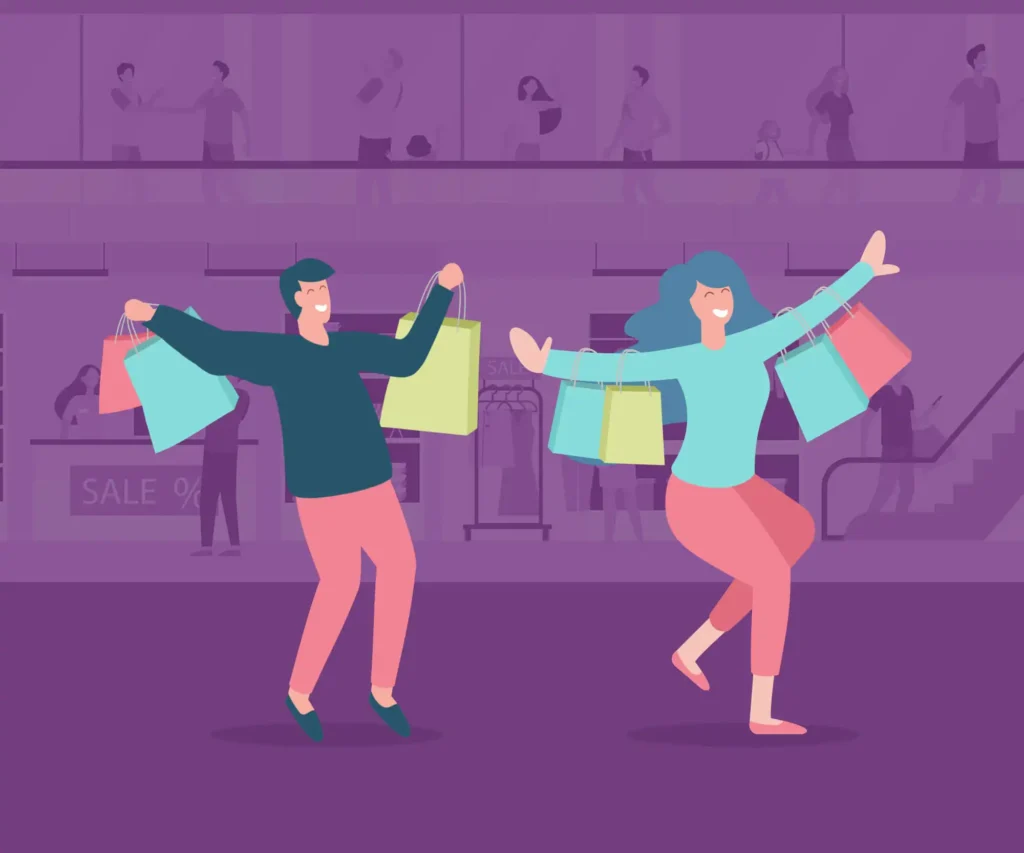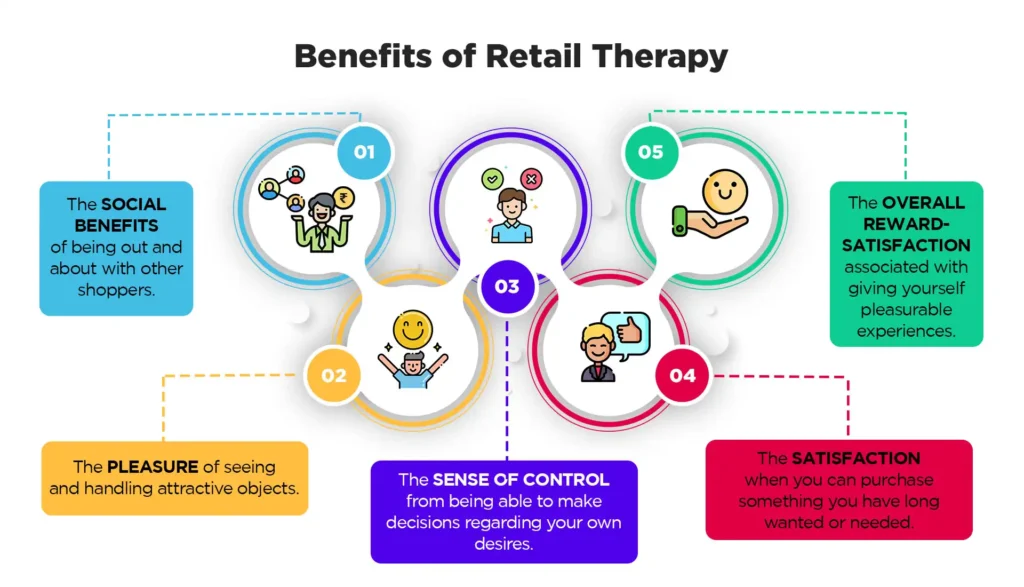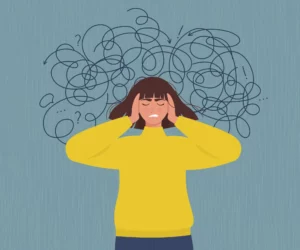
When you’re about to purchase a shirt you just saw in an ad or when you go to a website to buy a lamp you absolutely adore, a little voice inside your head might have asked you, “Do you need to buy this right now?” An easy way to quiet that annoying voice would be to say, “This is therapy. Retail therapy.”
If you often yield to the allure of retail therapy, we get you. No judgments here! Let’s dig a little deeper into this phenomenon that is now our guilty pleasure.
What is retail therapy?
Retail therapy refers to using shopping as a means to repair or relieve a negative state. In other words, if you prefer to use shopping to improve your mood, you are indulging in retail therapy. Various studies and in-depth consumer interviews have shown that this does work. There are multiple mechanisms behind why you might resort to this particular mode of psychological treatment.
What are its benefits?
When you feel low, you may find yourself planning a trip to the mall. Even if you end up buying nothing, you are likely to come back feeling better. This is because in the mall, surrounded by other shoppers, you feel a certain social connection. This connection, with other shoppers with similar goals and dreams in the mall, gives you the sense of community that many human beings search for in their activities. Even though this isn’t a personal community (you don’t know them and may not even speak to them), the feeling of belonging to a larger group engaged in similar things can soothe you and make you feel less alone. If you are shopping with friends or family, these feelings also take on a more personal touch.
We know the neurotransmitter dopamine acts as a ‘reward’ chemical, released when we complete a task or have a pleasant experience. Research now shows that rather than being released after a pleasurable activity or reward, the brain may release it earlier, anticipating the reward. Also, experiments on mice seem to show that the brain prefers decisions with a shorter waiting time for the reward. So, could this possibly explain why humans are excited by the idea that their non-essential toiletries will arrive within 24 hours instead of 3 days?
Shopping is an activity that could activate our ‘reward pathway’. One form of pleasure could come just from the sensory experience of browsing through attractive objects. But, as with online shopping, the other benefit is the pleasurable wait for the reward to come.
When you are out shopping or scrolling through a website, you need to decide on a purchase eventually. Making a decision is rewarding in itself, as it’s something you’re ticking off a mental checklist. Deciding to buy something makes you feel good, while choosing not to purchase something may also leave you satisfied! It is especially gratifying to feel proud about avoiding unnecessary expenses and reflecting on the money saved.
Another mechanism at work here is the sense of control involved. When things have gone wrong and you feel as if you are out of control, shopping presents a way for your brain to regain control. It gives you the chance to decide what to buy and when to obtain it, and then you exert control by purchasing it. This sense of control can help improve your mood and counterbalance the negative feelings you felt earlier.

Is it bad for you?
Don’t get it twisted, though. Calling this whimsical and sometimes expensive endeavour ‘therapy’ does not make it so. Regardless of how effective retail therapy may seem, it cannot get to the root of your problems. Granted, you feel a mood boost after the shopping spree (sometimes lasting for days), but this does not address what triggered the flurry of moods and thoughts that you couldn’t get through in the first place. In the worst cases, your harmless coping mechanism can become a compulsive disorder. In addition, there is the risk of tipping over from an occasional treat into a regular behavioural pattern. Experts have also established similarities between online shopping behaviours and gambling in terms of addiction and minimisation of risks.
As with any activity, retail therapy is acceptable when done moderately.
How to ensure that retail therapy remains therapeutic
There are ways to ensure your ‘self-care’ does not veer into unhealthy territory. One is to set a budget for yourself for the month. Keep track of this and treat yourself within that budget. In addition to the mood boost from the shopping, you may well feel the added satisfaction of staying within your goal!
Secondly, when you make a purchase, try and ensure that you are not duplicating something you already own. Over-purchasing can lead to a certain degree of hoarding. This can have its own problems as our mental health is also affected by how our surroundings seem ‘cluttered’ or crowded.
Finally, suppose you are uncomfortable acknowledging the amount you have spent or the number of things you have bought and downplay it even to yourself. In that case, it could mean that you are moving into unhealthy territory. Further, if you end up making purchases and then feel guilty or upset, that leads to another negative mood. You may try to make it better by buying even more things. Try to remain aware of how much you are buying, how comfortable that makes you feel, and how affordable it is overall.
So what’s the verdict?
There is still much to learn about retail therapy. So far, the risk of overconsumption seems to be the only negative consequence (provided you shop within your budget). However, by solely relying on this method, you may set up an unhealthy cycle in which you ignore the (possibly fixable) causes, and that can result in recurrent negative experiences.
Instead, use browsing, choosing, socialising, and shopping to feel better if you need to. But don’t forget to set a budget, live within your means, and take some time off to examine what may have brought on your negative feelings that you set out to destroy!



